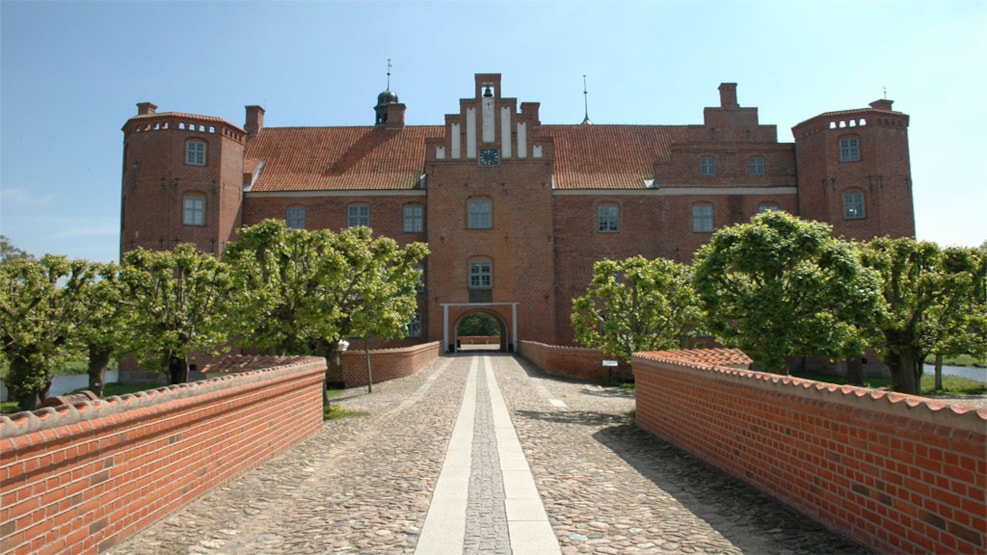
Gammel Estrup - one of Denmark's best preserved Renaissance manor houses
Gammel Estrup is located in Djursland directly by the main road between the towns Randers and Grenaa. On one side of the road is Helligbjerget, which has served as a landmark and vantage point throughout the ages, and on the other is the manor house.
The story behind Gammel Estrup
Building remains of the first Gammel Estrup have been found dating back to the 14th century, but the oldest parts of the current buildings date from around 1490. The majority of the current building was built around 1600 in red monk stone. The main building is surrounded by double moats and large farm buildings.
For the first 600 years, the manor was owned by the Brock/Scheel family, which for much of its history was one of Denmark's most powerful and wealthiest families. Since 1930, Gammel Estrup has been a museum.
The museum Gammel Estrup Danish Manor Museum
Today, the site is a museum where you can experience a unique series of halls, parlours and rooms decorated for different time periods. These include the knight's hall, sleeping quarters, library and parlours.
You can also see the servants' work and living quarters. Not least the manor kitchen, where coffee and cake are sold from the wood-burning stove during all holidays and up to Christmas.
Outdoors you can experience a magnificent baroque garden with original orangeries from 1725, vegetable gardens and a large manor playground. And if you take a walk in the woods, you can visit the small forester's house, which is decorated as it was in 1930.
Practical information
Dogs are allowed in the outdoor areas of the museum, provided they are kept on a lead. Dogs are not allowed indoors, unless it is a guide dog. There is a water bowl in the courtyard.
Gammel Estrup is a historic, listed building. The building does not live up to modern standards in terms of access, accessibility and comfort. You should therefore exercise caution both inside and out.